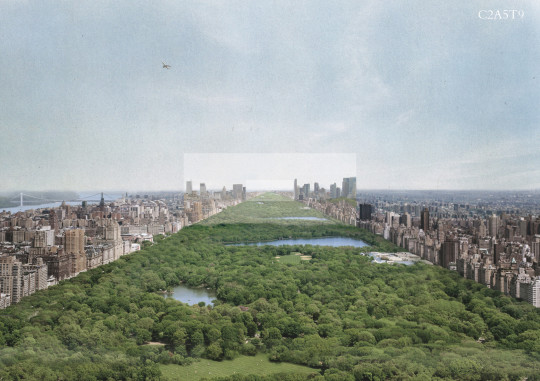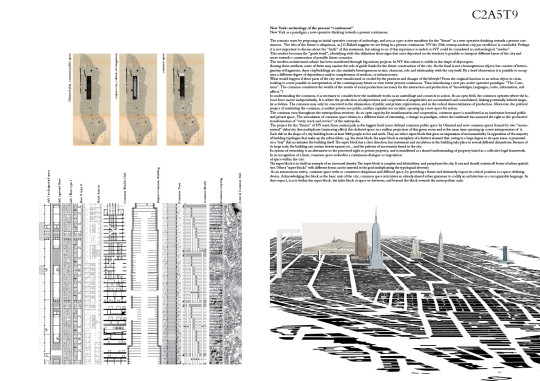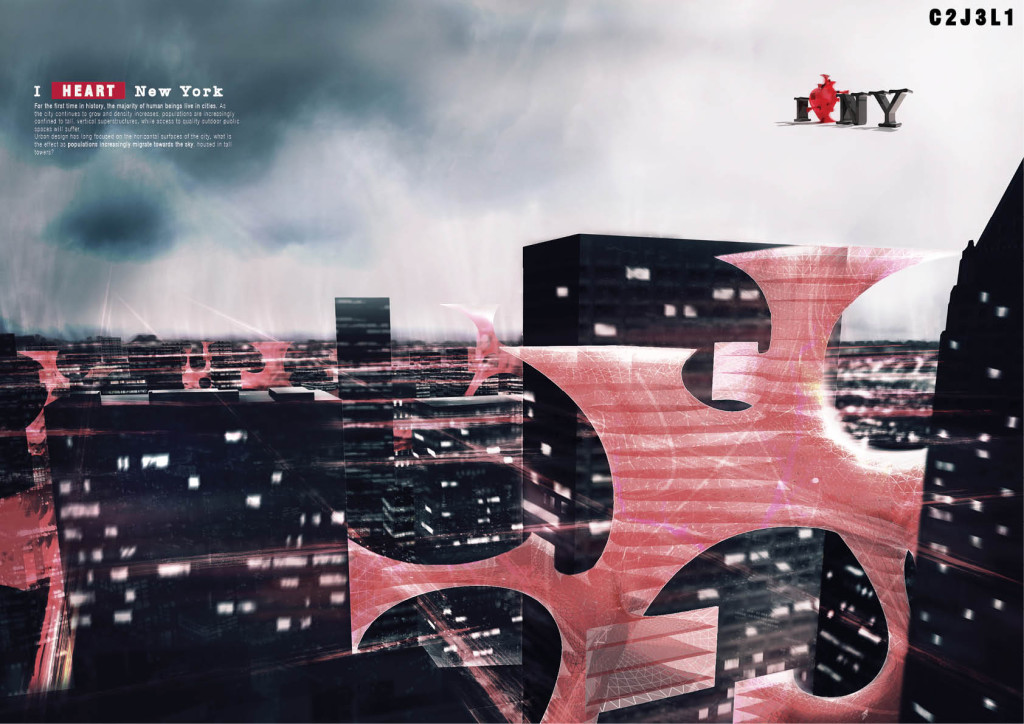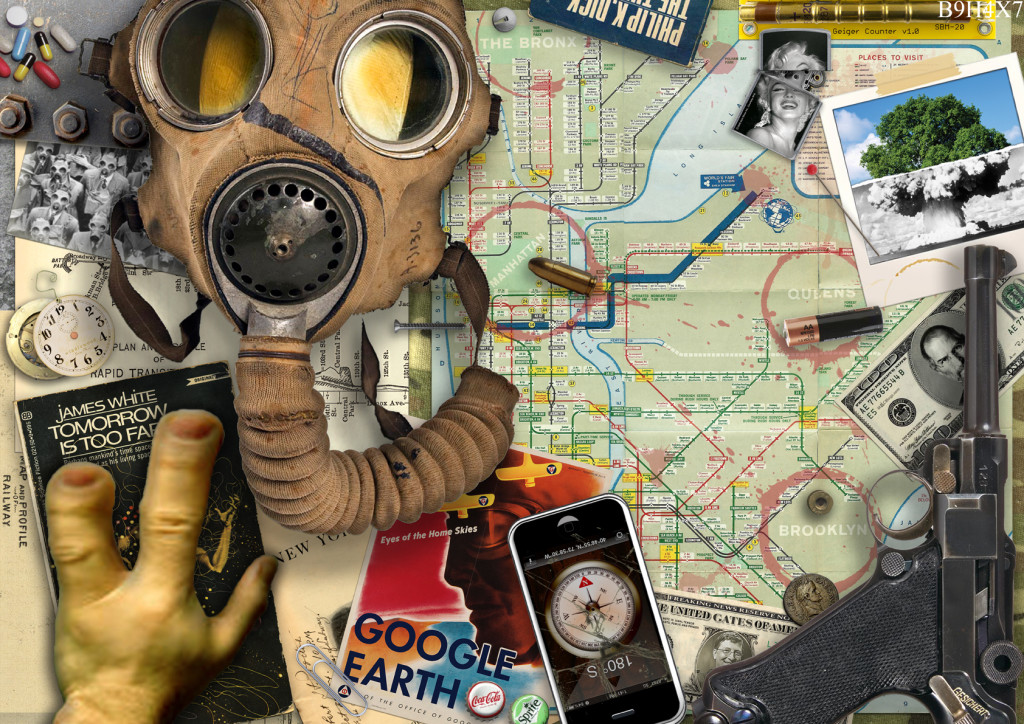Info:
Title: New York: archeology of the present “continuous” - Code: C2A5T9Contest: NY / 2012
By: A. Faoro - F. Rizzetto
Views: 4913 Likes: 4
Votes:
JOSHUA PRINCE-RAMUS4 EVA FRANCH I GILABERT7 ROLAND SNOOKS8 SHOHEI SHIGEMATSU5 ALESSANDRO ORSINI4 MITCHELL JOACHIM14.8
New York: archeology of the present “continuous”

 A new operative thinking towards a present continuous. The scenario starts by proposing an initial operative concept of archeology, and acts as a pro-active manifesto for the “future” as a new operative thinking towards a present continuous. The idea of the future is ubiquitous, as J.G.Ballard suggests we are living in a present continuous. NY the 20th century modern city par excellence is concluded. Perhaps it is not important to discuss about the “truth” of this statement, but asking to us: if this experience is ended, so NY could be considered an archaeological “residue”. This artefact becomes the “guide fossil”, identifying with this definition those signs that once deposited on the territory it possible to interpret different layers of the city and move towards a construction of possible future scenarios.
A new operative thinking towards a present continuous. The scenario starts by proposing an initial operative concept of archeology, and acts as a pro-active manifesto for the “future” as a new operative thinking towards a present continuous. The idea of the future is ubiquitous, as J.G.Ballard suggests we are living in a present continuous. NY the 20th century modern city par excellence is concluded. Perhaps it is not important to discuss about the “truth” of this statement, but asking to us: if this experience is ended, so NY could be considered an archaeological “residue”. This artefact becomes the “guide fossil”, identifying with this definition those signs that once deposited on the territory it possible to interpret different layers of the city and move towards a construction of possible future scenarios.
The modern architectural culture has been manifested through big unitary projects. In NY this culture is visible in the shape of skyscrapers.
Among these artefacts, some of them may assume the role of guide fossils for the future construction of the city. As the fossil is not a homogeneous object, but consists of heterogeneity of fragments, these city/buildings are also similarly heterogeneous in size, character, role and relationship with the city itself. By a brief observation it is possible to recognize a different degree of dependence and/or completeness of artefacts, or infrastructure.
What would happen if these parts of the city were transformed or eroded by the practices and changes of the lifestyle? From the original function to an urban object in crisis, looking to a new possible re-interpretation of the contemporary future or even better present continuous. Thus introducing a new pro-active operative paradigm: “The Common”. The common constitutes the wealth of the results of social production necessary for the interaction and production of “knowledges, languages, codes, information, and affects.”1
In understanding the common, it is necessary to consider how the multitude works as an assemblage and connects to action. As an open field, the common operates where the labour force moves independently. It is where the production of subjectivities and cooperation of singularities are accumulated and consolidated, linking potentially infinite singular activities. The common runs throughout the metropolitan territory. As an open capacity for transformation and cooperation, common space is manifested as an institution beyond public and private space. The articulation of common space relates to a different form of ownership, a change in paradigm, where the multitude has assumed the right to the productive transformation of “every crack and crevice” of the metropolis.
The project for the “future” of NY starts from central park as the biggest fossil (once defined common public space by Olmsted and now common space) framed by two “monumental” slabs/city that moltiplicate (mirroring effect) this defined space in a endless projection of this green room and at the same time opening up a new interpretation of it.
Each slab in the shape of a city building hosts at least 5000 people to live and work. They are infact super-block that gives an impression of monumentality. In opposition of the majority of building typologies that make up the urban fabric, e.g. the street block, the super block is exemplary of a distinct element that, owing in a large degree to its open areas, is presented on a “tray” that accentuates the building itself. The super block has a clear direction, but movement and circulation in the building take place in several different dimensions. Because of its large scale, the building can contain streets squares etc… and the patterns of movements found in the city.
The super block is in itself an example of an increased density. The super block is complex and labyrinthine, and paraphrases the city. It can and should contain all forms of urban specialities. Others “super blocks” with different forms can be inserted in the grid moltiplicating the typological diversity.
Info:
Title: New York: archeology of the present “continuous”
Time: 13 giugno 2012
Category: NY
Views: 4913 Likes: 4
Tags: -






